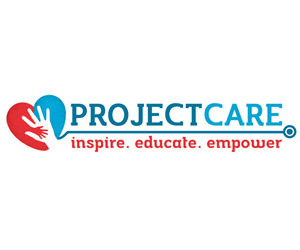Local celebrity and TV personality Gurmit Singh shared that he wished he had known about hospice care when his mum and dad had cancer 15 years ago. He said: “As the son and caregiver, it was hard, difficult and emotionally- and physically-draining. The load and stress didn’t just affect me but those close to me as well. I couldn’t help but think there must be a better way. Unfortunately, I didn’t know about hospice care then. That is why, when I learnt about what Dover Park Hospice (DPH) is doing and how hospice care can help both the patients and their families, I know this is the answer.” He recently came onboard as DPH’s ambassador for its 25th anniversary outreach campaign, “Hospice care is a wise choice” for seriously-ill patients.

He further emphasised, “I want to help caregivers who were like me to know that hospice care is a wise and viable choice. I want to help seriously-ill patients who think they have no choice but a painful death, to know that there is a choice and that hospice care can help them.” Gurmit is the first celebrity ambassador for the secular charity hospice. He will help bust myths about hospice care and spread awareness on how hospice care can help seriously-ill patients live life meaningfully and with purpose, making every moment matter.
Prof Lionel Lee, chairman of DPH, explained that while hospice care has been available in Singapore for decades and has helped numerous patients, “many seriously-ill patients and family members continue to have misperceptions”. He said: “They usually perceive the hospice as a gloomy place and coming to a hospice as ‘giving up’. Because of their perception, some may be reluctant to consider hospice care and pursue futile aggressive treatments to the end.”

So, what are those common myths about hospice? According to DPH’s medical social worker, there are five most common myths among patients and families which they encounter at the first interview before admission:
- Myth: Hospice provides no care or less care for the patient.
Reality: The hospice provides more care for the patient. At the hospice, the patient is cared for and supported by a clinical team comprising of doctors, nurses, medical social workers, therapists and volunteers. They work towards enhancing the patient’s quality of life by keeping them comfortable and managing their symptoms such as pain and nausea through medicines, therapy and other supportive treatment. They also work with other specialists from acute hospitals and national centres to care for the patients. - Myth: Doctors and nurses are not as qualified as those in hospitals.
Reality: Doctors and nurses in the hospice are trained in palliative care. Some of them are specialists as well. In DPH, the hospice provides palliative care training for other doctors and nurses in Singapore and other regional countries. Its clinical team is also said to be in the forefront of palliative care innovation and research. - Myth: Hospice is a gloomy place, like a dying house. It is not suitable for children and elderly to visit.
Reality: The hospice is full of life and activities. Patients can take part in craft activities, therapy and outings. People of all ages can visit and at DPH, it encourages family and friends to hold gatherings with their loved ones at the hospice. Even, families hold birthday parties and reunion dinners at DPH. The hospice also has patients who play mahjong games with friends. - Myth: Families feel that they are “abandoning” the patient by choosing a hospice.
Reality: The hospice is a partner in care and it works with the family in caring for the patient. As psychosocial support is a key part of what DPH does at the hospice, it provides support for the family and work with them to help the patient find closure and peace. The family can also be with the patient at the hospice at all times. - Myth: Hospice is a “one-way traffic” – cannot going home.
Reality: Patient and family members always have choice and control over their care. They can go back on home-leave, or choose to return home after a period of time. DPH also has patients who choose to go home in the last few days, so that they can die at home.
According to DPH, for patients who enter the hospice reluctantly, many of them soon changed their mind when they found that they were well-supported, they had control and choices, and they were living life meaningfully.
Gurmit will be participating in DPH’s outreach events and will be spreading the message through the media, social media as well as the community roadshow in Bishan Community Club from September 23 to 24, 2017.














